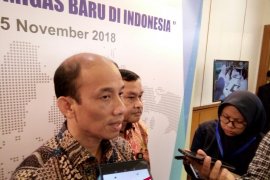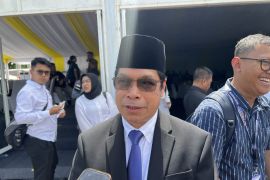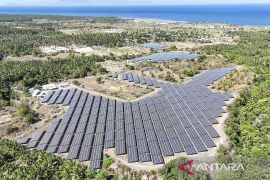Geothermal power plants (PLTP) could continue to operate ..."Jakarta (ANTARA News) - Geothermal power is expected to contribute 9,500 megawatts to the countrys energy requirement in 2025 when oil contribution is to be cutback by 30 percent.
Stability of production of geothermal power is more reliable as it is not affected by weather, Deputy Minister for Energy and Mineral Resources (ESDM) Arcandra Tahar said when visiting Pertamina Geothermal Energi (PGE) of Kamojang Area on Sunday.
The superiority in production stability makes geothermal power base load in electricity provision by state electricity company PLM for the public, Arcandra said.
Production of geothermal power as a base load would continue at full capacity when the use of power at its lowest level, he said.
"Geothermal power plants (PLTP) could continue to operate at full capacity while oil fueled and coal fired power plants have to be shut down as bad weather," he said.
He said the challenge in the development of geothermal power is competitiveness of the geothermal power price.
The production cost of geothermal power is high making it less competitive in price facing power produced from other facility such as, gas, oil and coal fired power plants.
Data at the Geology department of the ESDM Ministry showed that Indonesia holds the largest reserve of geothermal in the world.
The data said Indonesia has known geothermal reserves of 29 GWe found in 265 locations in the country or around 40 percent of the worlds reserves.
If the potential could be fully converted into reality, the country would save 1.2 million barrels per day needed to generate energy, Arcandra said.
Meanwhile, Operation Director of PGE Ali Mundakir said by the end of 2016, the installed capacity of PGE was 537 MW electricity equivalent. Four of 14 Geothermal Working Area (WKP), have been in operation by PGE. They are Kamojang Area in West Java, Sibayak in North Sumatra, Lahendong in North Sulawesi, and Ulubelu in Lampung.
Five other WKP are operated by its partners including Sarulla in North Sumatra, Gunung Salak, Darajat, Wayang Windu, all three in West Java and Bedugul in Bali, Ali said.
He said the Kamojang Area is the first WKP in Indonesia producing geothermal power. It started commercial operation with PLTP Monoblok built in 1987 with a capacity of 250 kWe officially commissioned by then Mining and Energy Minister Subroto.
Commercial operation of the PLTP in Kamojang started in 1983 with Kamojang Unit-1 coming on line (30 MW), followed by Unit-2 and Unit-3 in 1987 each with a capacity of 55 MW.
"The three units of PLTP are owned by Indonesia Power (IP), a subsidiary of PLN. PGE, therefore, sold geothermal steam to IP," Ali said.
The Unit - 4 of PLTP Kamojang came on line in 2008 with a capacity of 60 MW and PLTP Unit-5 in 2015 with a capacity of 35 MW.
PGE handled the jobs from explorations to development of the field as well as the construction and operation of the power plants.
"The output in electricity is sold to PLN which deals with the end users," Ali said.
Altogether the total installed capacity of the Kamojang Area is 235 MW electricity equivalent, supplied to the high voltage 150 KV cabel of the Java-Madura-Bali interconnection.
Ali said the Kamojang Area has received a citation of Proper Emas (Gold) from the Ministry of Environment and Forestry in six successive years from 2011 to 2016.
On that Sunday, Arcandra also visited Geothermal Information Center (GIC), PLTP operation areas, Kamojang Crater tourist area, and Kamojang Eagle Conservation Center (PKEK), built by PGE in cooperation with the Natural Resources Conservation Center (BBKSDA) of West Java.
Accompanying Arcandra included Director General for New and Conservation Energy (EBTKE) Ridha Mulyana and Geothermal Director Yunus Saefulhak.
(Uu.H-ASG/A014)
Editor: Priyambodo RH
Copyright © ANTARA 2017












